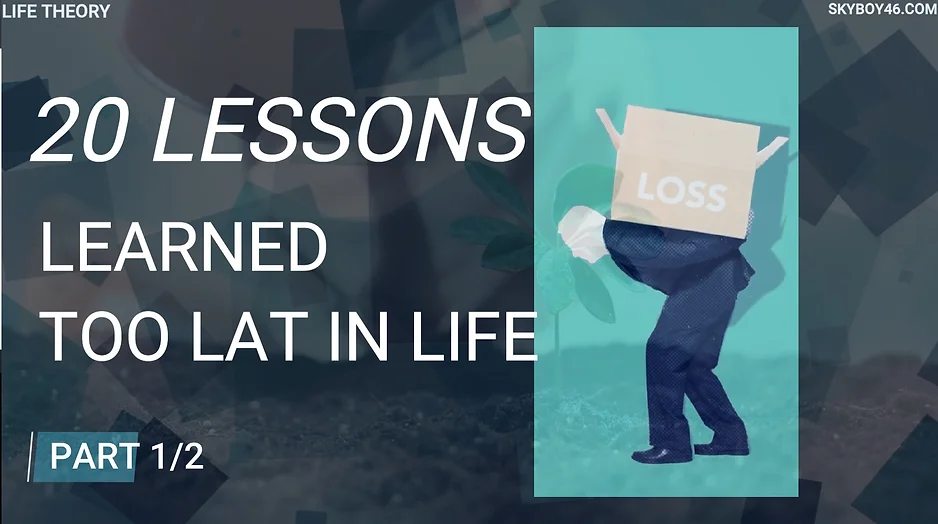Don’t Want To Read?
Watch/Listen To The Full Video on YouTube
As kids, we were scolded for staring out the window, lost in thought. But what if daydreaming wasn’t a waste of time, but a powerful tool for creativity and problem-solving? Science now proves that when your mind wanders, it’s actually making connections, generating new ideas, and solving problems in ways focused thinking never could. The greatest breakthroughs—the lightbulb moments—don’t happen when we force them; they happen when we let our minds explore freely. So the next time you catch yourself daydreaming, don’t snap out of it. Let your imagination lead the way—you never know what genius it might uncover.
SUBSCRIBE: https://www.youtube.com/@LifeTheory46
Unlock Your Daydreaming Power – Life Stories 266
Good morning, good afternoon, or good evening—wherever you are, whatever time it may be, it’s always a good time to reconnect with yourself. How are you feeling today? Whether you’re just starting your day, or wrapping it up, take a moment to center yourself. We’re curious about something, and we want to ask you: What’s one thing you’d love to see or experience today? Think about it—something simple, something small. Maybe it’s someone being kind in traffic, or a smile from the cashier, or a moment of calm before bed. Let that thought settle in your mind for a bit, and just breathe. For the next few moments, focus on the potential your day holds, on the gratitude those small joys bring you. Breathe in that feeling, and when you’re ready to come back, we’ll still be here.
Do you remember those moments back in school, sitting at your desk, when your gaze would slowly drift to the window? Your mind would wander, carried by your daydreams. Suddenly, you weren’t in that classroom anymore—you were out exploring distant galaxies, winning awards, sailing the high seas. It was a magical escape until your teacher snapped you back to reality, and there you were, caught in the act, feeling embarrassed as the class giggled. But what if I told you that what you were doing was something powerful?
Daydreaming has long been misunderstood. For years, it was seen as just a mental break, a moment when your brain goes on autopilot. But as our understanding of the brain has deepened, we’ve learned that daydreaming is far from idle—it’s a superpower. The very same areas of your brain that activate when you recall memories or strategize for the future light up when you’re lost in thought. It’s all part of what scientists call the “default mode network.” And while that might sound like something you slip into when you’re zoning out, it’s actually a creative engine working behind the scenes.
As we grow older, something strange happens to our daydreaming. It shifts. Instead of dreaming about endless possibilities, our minds tend to get trapped in loops of worry and planning. Why? Well, as time goes on, the future starts to feel smaller. When we’re young, we dream endlessly about what could be. But as the years pass, that imagined future shrinks, and with it, our daydreams.
Here’s an interesting twist—daydreaming has a sneaky way of making us forget. Research shows that the more vivid and fantastical our daydreams, the more likely we are to lose track of what we were doing before we drifted off. And the bigger the dream, the more mental energy it requires. So, if you find yourself imagining something far from reality—like becoming an astronaut—that dream demands a lot of brainpower, making it easier to forget the mundane task at hand. But if your daydream is more grounded, like following in a parent’s footsteps, that forgetting effect is much smaller.
So, how does daydreaming really work? It turns out your brain has two main systems that usually don’t operate at the same time: the analytical part, which helps you make decisions, and the empathetic part, which allows you to connect with others emotionally. When you’re engaged in daydreaming, something incredible happens—your brain flips between these two systems, cycling through problem-solving and emotional processing, like a mental seesaw. This allows you to approach challenges from multiple angles, solving problems you might have been stuck on if you were too focused on one side or the other.
Think about it. Have you ever had a lightbulb moment while daydreaming, when suddenly everything just clicked? It’s because daydreaming opens up pathways in your brain that aren’t usually accessible when you’re focused on a single task. It lets your mind make connections between ideas that seemed completely unrelated just moments before. Maybe you’re thinking about a conversation with a friend and realize they’ve been distant because of something that happened weeks ago. Or maybe you suddenly remember an old project you had set aside but now see with fresh eyes.
The truth is, daydreaming occupies a lot of our mental time—up to a third of our waking hours. That’s a massive chunk of time. Instead of seeing it as wasted, what if we embraced it as an essential tool for creativity and problem-solving? As we grow older, our daydreams tend to become more focused and achievable, shaped by our goals and experiences. And while we can’t control every detail of our daydreams—that would defeat the purpose—we can guide them towards areas that need attention in our lives.
Start with something small—maybe a work project, a relationship, or even your health. Let your mind wander, but don’t feel guilty about it. You might just find that you’re able to tackle some of your most pressing issues in ways you hadn’t considered before. When your brain slips into free-flowing thought, it connects the dots for you, giving you solutions, insights, and ideas that feel like they came out of nowhere.
Now, science backs this up. When we daydream, we first enter what’s called the “generative phase,” where the default mode network takes the wheel. This phase is all about spontaneity, where your thoughts flow freely without much structure. After that, your brain moves into the “executive phase,” where it starts sorting through those ideas, picking out the ones that make the most sense. It’s like a perfect dance between creativity and logic, one fueling the other.
Daydreaming turns your brain into a powerful engine capable of processing thousands of scenarios, picking out the best ones, and figuring out how to make them work. So the next time you find yourself drifting off, let it happen. Be the astronaut, the award-winner, the explorer. It’s not just fantasy—it’s your mind hard at work, helping you process the world and find your way through it.
–> Read More Life Stories Here:
https://www.lifetheory.us
https://www.lifetheory.eu
Buy all of our Life Stories & Our Premium Learning Packs. Listen or Read to them anytime you want. Have them Forever.
You can get each monthly lesson on our website at https://www.skyboy46.com/store
SHARE THIS STORY
Visit Our Store
SHOP NOW
www.skyboy46.com & www.myskypet.com
Designed For Pet Lovers & Introverted Souls
Sport, Hobbies, Motivation, Music & Art






~EXPLORE MORE~
www.linktr.ee/skyboy46


